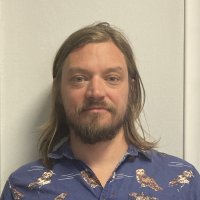
I am a restless reader and am always looking for new ways of being entangled in poetry, text, art. I’m interested in how people are engaged with poetry, both contemporary and historical, and the art of poetry—not only in poems and books, but also in advertising, film photography, social media, and found text. How do the visual elements of the page operate? How does the poem sound when read aloud? Am I able to trace the sonic and rhythmic qualities in the work? How does the poet play with boundaries and limits, dismantle preconceived notions and beliefs in an attempt to uncover and deepen what Alice Notley calls the “poetry talent”?
I look for ambition in the work, which is different from career ambitions. I encourage poets to write the poetry that is you, to write what you must write, not a repetition of what’s already ubiquitous. Remember that editors read thousands of poems a year, so we are looking, always looking, for work that trips us, knocks us over, demands our attention. The poet Leland Hickman wrote of poetry this way: “A poem is not an abstraction. It is a product of the body. It is not the fingerprint. It is the fingertip. No poem goes beyond meaning. Meaning is the body. Yr body.”
—Stephen Motika, director and publisher of Nightboat Books






